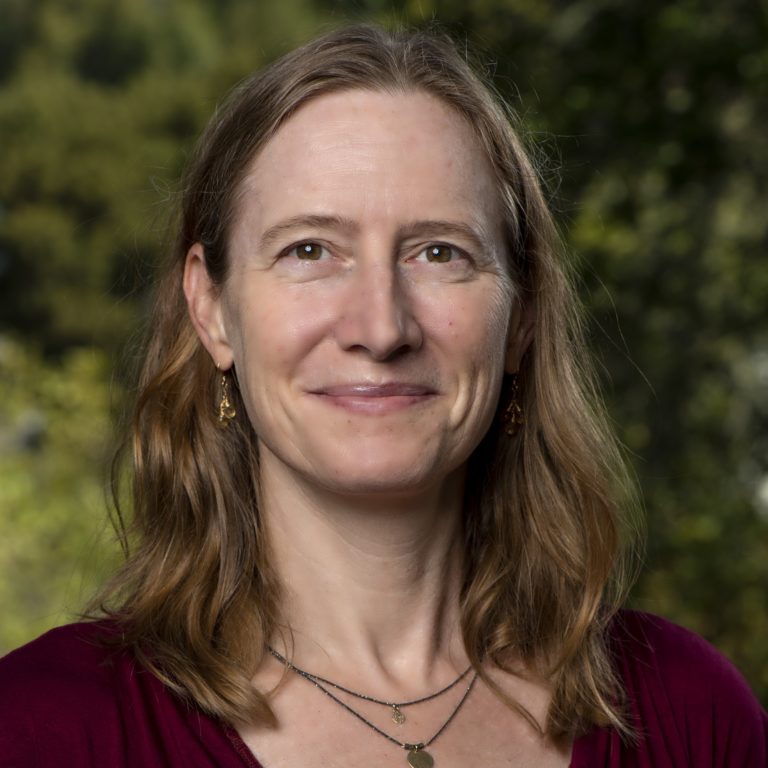A few weeks ago, I had the opportunity to meet with Suzanne Baker, head of Cellular and Tissue Imaging at Lawrence Berkeley National Lab, ahead of her Professional in Residence at QB3-Berkeley on April 9th. Graduate students and postdocs can register here for Baker’s visit. We had a wonderful time chatting about science, hobbies, and staying motivated.
Meaghan Marohn: What led you to science? Was it always your plan?
Suzanne Baker: I always loved math and physics in high school. I once saw an Omnimax film about the human body, where a camera was threaded into a beating heart, and I thought, “Whoa, this is so cool!” I was fascinated by how we could visualize what’s happening inside us.
I pursued biomedical engineering as an undergrad, then applied to grad school because I found it exciting. When I visited Berkeley, I met Stan Klein in Vision Science and worked on visualizing brain action potentials. Even now, when I see a brain image, I think, “Can you believe we can do this?” More than anything, I’m following childlike wonder and enthusiasm, trying to create a job out of it, and hopefully do some good for humanity at the same time.

MM: What research questions drive your curiosity?
SB: During my PhD, I worked with EEG and dipole source localization, combined with fMRI. Initially, I dismissed positron emission tomography (PET) as outdated, not realizing how phenomenal it was. PET relies on radiochemists to develop tracers that target specific biological processes. Every time a new radiotracer emerges, it’s a reason to be excited.
In 2005, I joined LBNL and worked with Bill Jagust. A new PET tracer, Pittsburgh Compound B, had just been developed to bind to amyloid plaques—one of the proteins linked to Alzheimer’s. For the first time, we could measure amyloid accumulation in living brains. It was a big deal! I was lucky to enter the field at the right moment, surrounded by brilliant mentors pushing PET’s potential.
MM: What’s your role as department head?
SB: Now, I focus on designing studies and securing grants. Over the years, I’ve done everything from fixing our old PET scanner to writing the core analysis code for our lab’s research. One major project I oversee involves scanning people at multiple sites with amyloid and tau tracers, comparing their effectiveness.
As department head, I try to foster collaboration and find ways to be useful. I think about how I can have a positive impact—and then I just try to do that.
MM: What keeps you balanced outside of science?
SB: Everyone’s different. Some people think about science 24/7 and love it—that’s not me! My brain works better with breaks. When I have a tough day, I hike or swim. I’ve been swimming my whole life, not to compete, just to enjoy it. During the pandemic, I even swam in the bay.
I also coach an adult synchronized swimming team in SF. It’s mentally demanding—I have to remember routines, give feedback, and stay engaged. I joke with my team that I’m helping them avoid Alzheimer’s by keeping their brains flexible!
And then there’s my dog. I’ve always loved dogs, and no matter what happens, I walk my dog at 5 p.m. Taking care of something outside myself keeps me grounded. I believe we’re at our best when we serve others—whether it’s mentoring scientists or making sure my dog has the best day ever.
MM: What’s been the most important factor in your success?
SB: Showing up and authentically caring. I may not be the smartest person in the room, and I don’t overwork myself, but I maintain enthusiasm and balance. When I’m passionate about something, I can do amazing work. Most people excel when they’re truly excited about what they’re doing.
We all go through funks—whether from science or life in general. Having a support system, both professionally and personally, is key. Science is about people as much as it is about discovery.
I believe we’re all works in progress. I just keep showing up and trying. If that’s not enough, I’ll try again tomorrow. All I can do is my best.
Meaghan Marohn is a PhD student in MCB and CCB DE studying human evolution and population genetics in Priya Moorjani’s lab.
Suzanne Baker earned her PhD in Vision Science at UC Berkeley. After her postdoc, she worked with Bill Jagust at LBNL on PET quantification. She now co-leads a team studying tau imaging in Alzheimer’s progression.